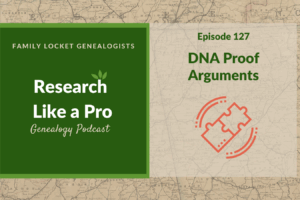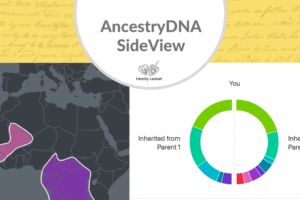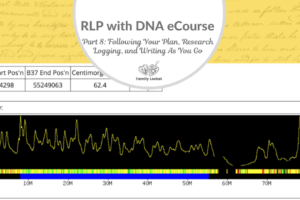We have all heard of someone being a first cousin once removed or another relationship “once removed,” and sometimes it gets confusing, and you may think, “…Ummm, we are cousins, that’s all that matters.” If you are at an extended family reunion, that pretty much IS all that matters! If you are invited, you know that you are attending with people descended from the same parents, grandparents, or great-grandparents. Perhaps you’re lucky to have a family that organizes extended family reunion events, there may be descendants at the party who share even more distant grandparents with you. The challenge is that if there are many descendants, it’s hard to meet them all and keep everyone’s relationship straight in your head.
Why should I care?
When we work with our DNA results, naming the exact relationship DOES matter! Discerning the exact relationships we share with our DNA matches is critical because it helps us confirm genetic relationships with our ancestors. Suppose two or more people share a common ancestor, and there is no pedigree collapse or endogamy. In that case, a genetic relationship between the DNA tester(s) and the common ancestor is confirmed.
The precise relationships with our DNA matches also help us identify previously unknown ancestors and hopefully help us break through “brick walls” and extend our ancestral lines more generations.
Basic Relationships
You already know that if your mother or father have siblings, and the siblings have children, you are 1st cousins with those children. If your 1st cousin has children, his or her children are 1st cousins once removed (1C1R) to you. If you have a child and your 1st cousin has a child, those children are 2nd cousins.
Table 1 shows shared ancestors for people in specific, primary relationships. If a person shares a great-grandparent with a cousin and they are the same number of generations away from that great-grandparent, they are 2nd cousins.
The “rule of thumb” in these primary relationships is that you can take the number of greats in great grandparent – many times great grandparent, then add one to get the cousin level for descendants. The descendants must be the same number of generations descended from that great – many times great grandparent to be described as 2nd – 8th and beyond cousins.

The meaning of “removed” in a relationship description is that the two relatives compared are one or more generations higher or lower than the primary cousin relationship. If you and a cousin are one generation higher or lower, you are “once removed.” If you are two generations higher or lower, you are “twice removed.” If you are three generations higher or lower, you are “three times removed,”
The Shared cM Project, 4.0 tool v4 by Blaine Bettinger and Jonny Perl, lines up a DNA tester (Self) with their relatives and lists the relationship, the average amount of DNA shared with the tester (Self), and the range of cM of DNA observed in those relationships. All connections shown are labeled in relation to the DNA tester.

Everyone in the blue boxes in the center of the chart descends from the Parent, shown in the three-box wide horizontal bar.
– The green boxes show people who have a grandparent in common.
– The orange boxes show people who share a great grandparent or great grandparents in common.
– Gray boxes show relationships descending from shared with great-great grandparent(s).
– Yellow boxes illustrate cousins descended from 3rd great-grandparents.
– Purple boxes show people descended from the 3rd great-grandparent’s sibling(s).
Look at the boxes in the same horizontal line as “Self.” The relationships listed are what I’m calling “Basic relationships,” meaning that they are relationships with people that are in the same generations as you are without once, twice, or any times removed relationships (see Table 1).
– Determine how many generations are between you and the ancestor you are researching.
– This ancestor is the person you are trying to find in your DNA matches’ family trees.
– If you find that ancestor listed in a DNA match’s family tree, count the number of generations from the ancestor you are researching (the common ancestor) down to the same generation level as you.
– People in the same generation level as you are will fall into one of the basic relationships shown in the Shared cM Project 4.0 tool v4
– If the DNA tester is in a different generation than you are, count those additional generations.
– If there is one generation difference, then you are __cousins once removed.
– If there is a 2 generation difference, then you are __ cousins twice removed.
– If there is a 3 generation difference, then you are ___ cousins three times removed.
– The relationship you share with a DNA match will frequently be in the once, twice, or three times removed category.
– If you know the specific relationship with a DNA match, you can also figure out the distance between you and them and your common ancestor.
Next time you see or hear of a once, twice, or three times removed relationship, you will better understand what that means. You will be able to figure out how you and your __ cousin ___times removed are related and which ancestors you share.
To learn more about researching your family history and incorporating DNA evidence, see our book:
Research Like a Pro with DNA: A Genealogist’s Guide to Finding and Confirming Ancestors with DNA Evidence in both print and Kindle editions.
Best wishes in your genealogy research!















9 Comments
Leave your reply.